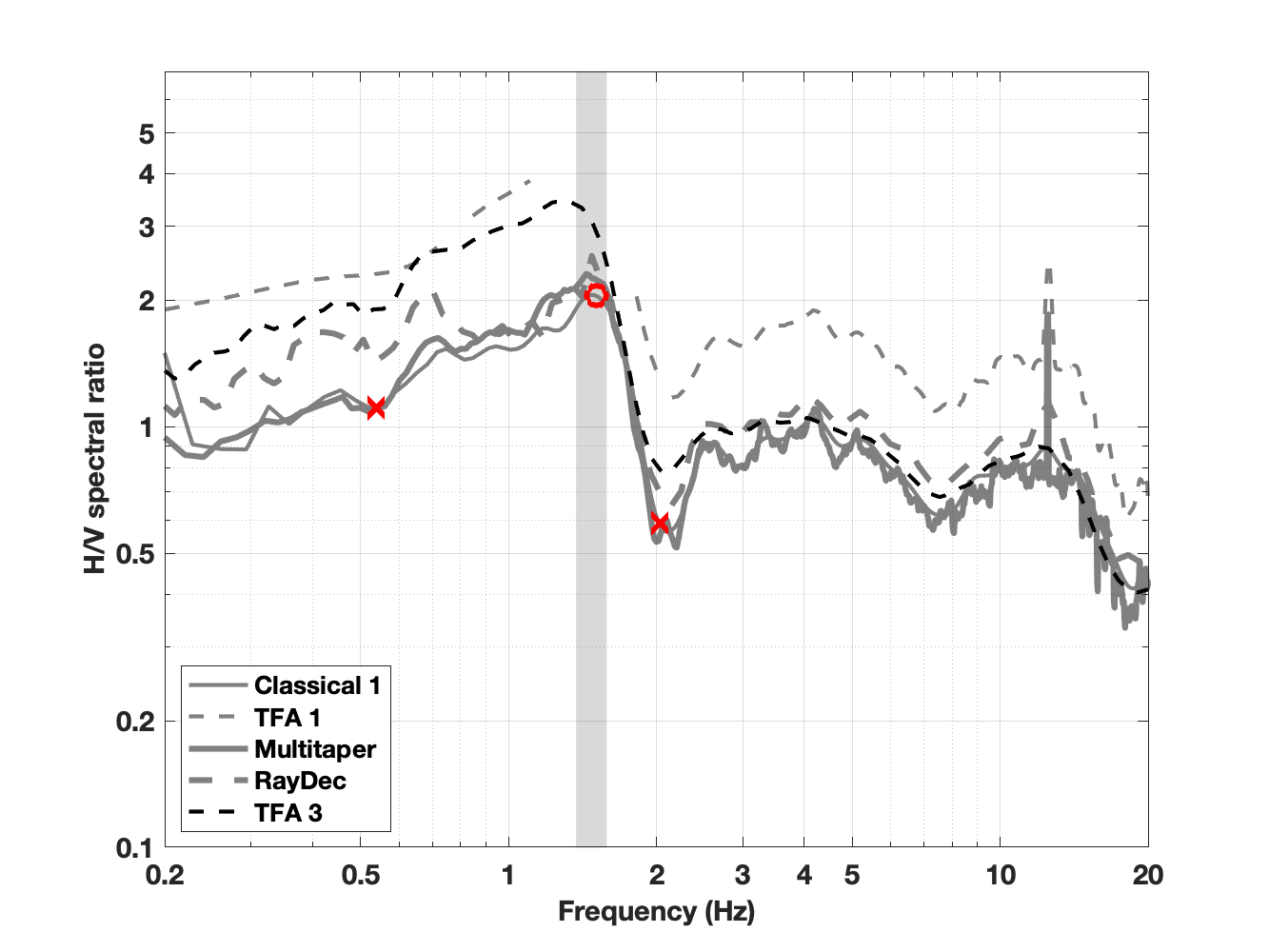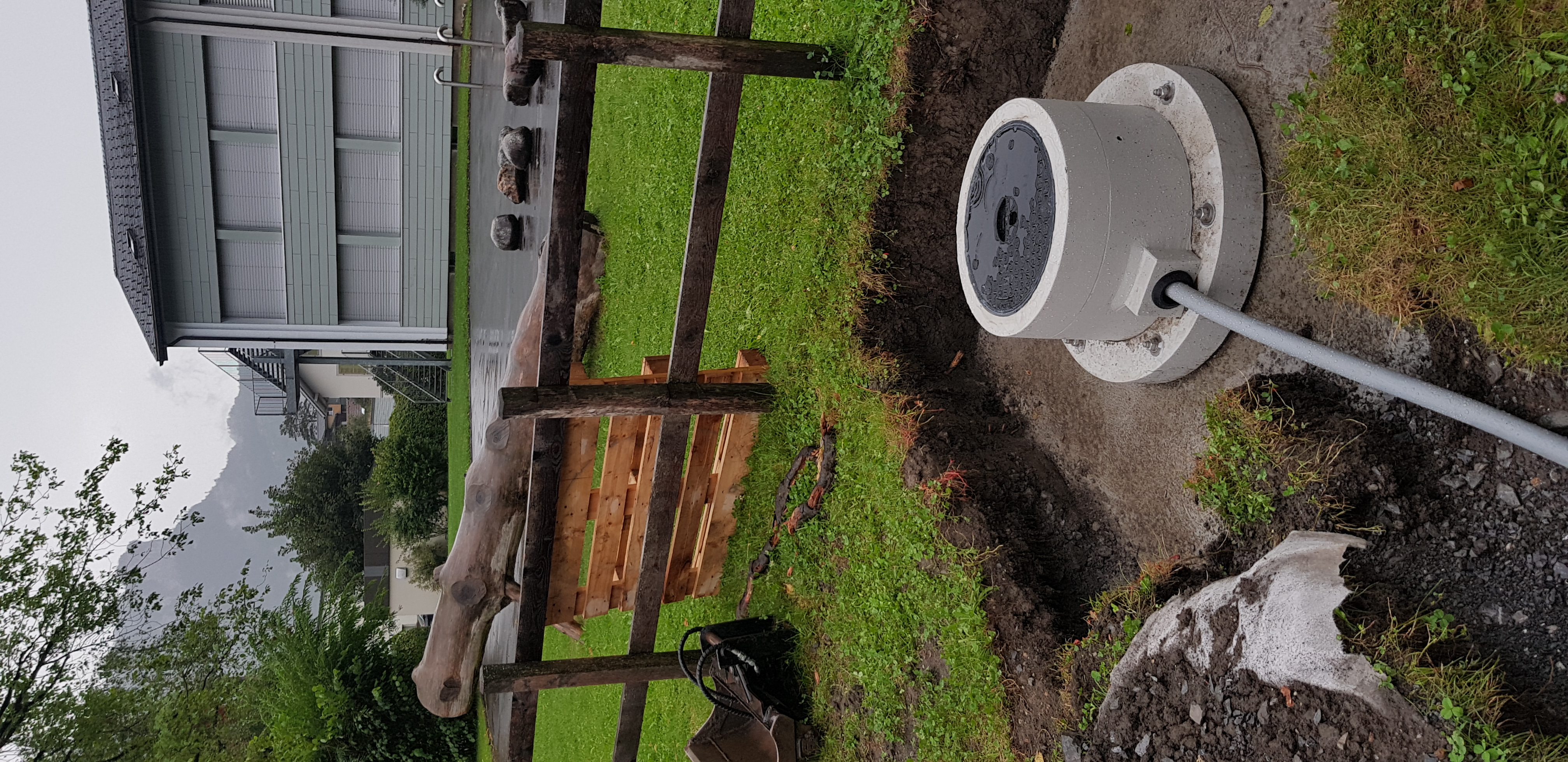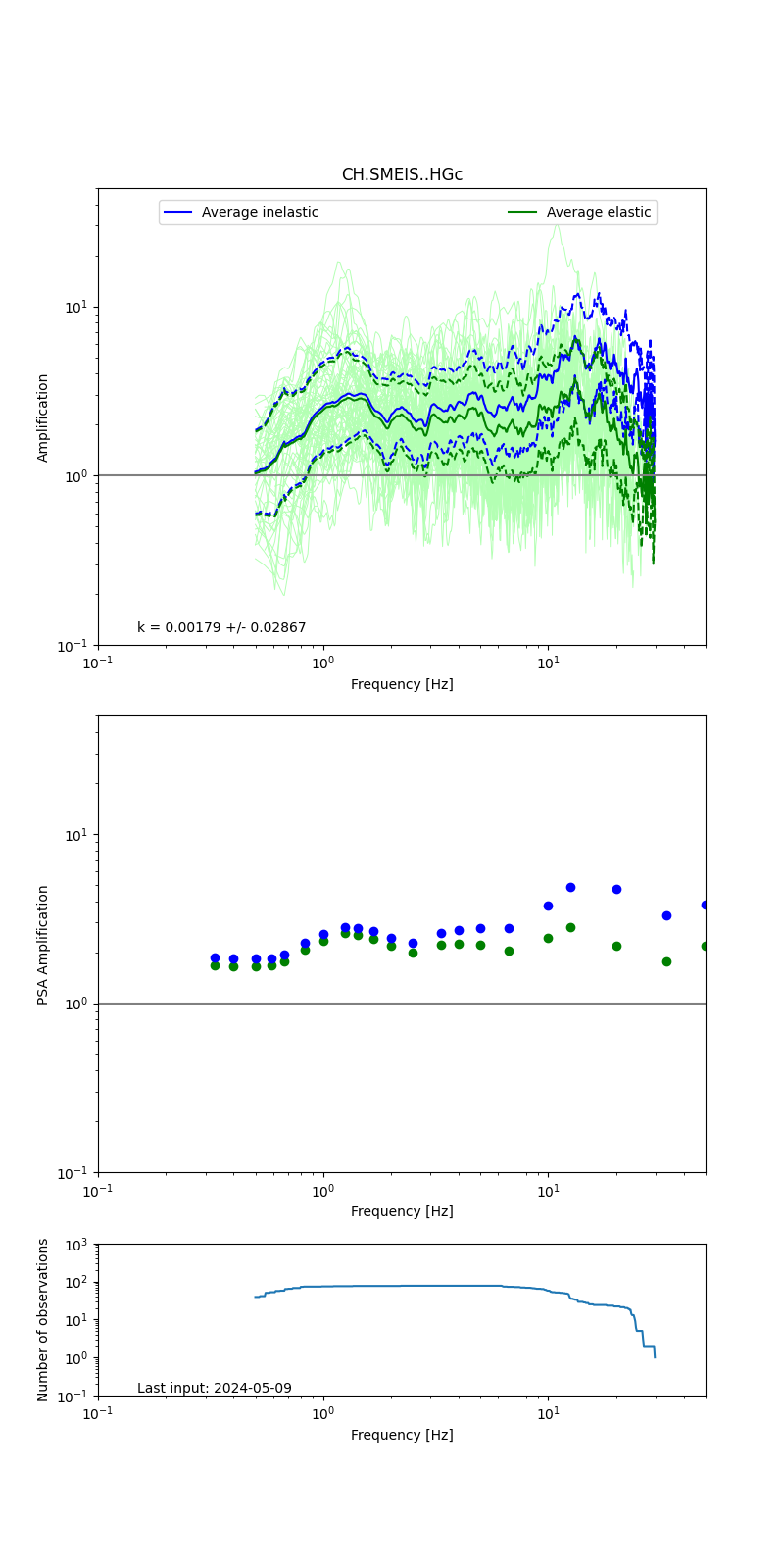Station Overview
| Overview Location | not available |
|---|---|
| Picture Gallery | details... |
| Geological Unit | Alluvium (unconsolidated debris) |
|---|---|
| Site Morphology Class |
T1 T1: flat; T2: slope; T3: ridge and T4: steep ridge; following Pessina and Fiorini (2014) A GIS procedure for fast topographic characterization of seismic recording stations, Soil Dynamics and Earthquake Engineering, 63, p248-258 |
| Site Morphology Description | Fluvial geomorphology: alluvial slope, plain, cone |
| Ground type EC8 | B |
| Ground type SIA | C |
| Basin Information | In a sedimentary basin with 1D resonance and significant lateral propagation basin |
| Reference | Chieppa Dario, Hobiger M. & Fäh D., "SITE CHARACTERIZATION REPORT SMEIS: Meiringen (BE)", Swiss Seismological Service, ETH Zürich, 2021 |
Site Characterization
Obtained from spectral modeling of small earthquakes with constant update.
- Top: Fourier amplification with elastic (dashed line) and anelastic (solid line) amplification functions;
- Centre: 5% damped response spectra amplification (anelastic);
- Bottom: Number of recordings used.
See Edwards et al. (2013), Determination of Site Amplification from Regional Seismicity: Application to the Swiss National Seismic Networks. Seismological Research Letters, 84(4), 611–621.
| H/V pick image: |
 |
|---|---|
| Authoritative Site Characterization Analysis | details... |
| measurements nearby | list... |
|---|



